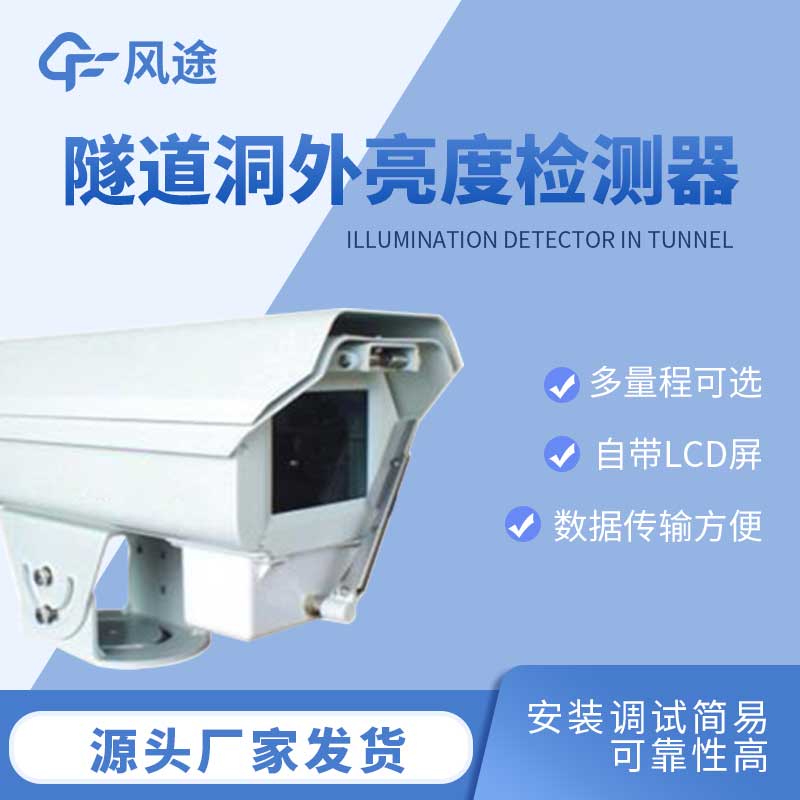Shandong Fengtu IOT Technology Co., Ltd
Sales Manager:Ms. Emily Wang
Cel,Whatsapp,Wechat:+86 15898932201
Email:info@fengtutec.com
Add:No. 155 Optoelectronic Industry Accelerator, Gaoxin District, Weifang, Shandong, China

Sales Manager:Ms. Emily Wang
Cel,Whatsapp,Wechat:+86 15898932201
Email:info@fengtutec.com
Add:No. 155 Optoelectronic Industry Accelerator, Gaoxin District, Weifang, Shandong, China
time:2025-08-01 09:19:19 source:Weather Station viewed:215 time
As a special section in the transportation network, tunnels, with their enclosed environment, are susceptible to factors such as vehicle exhaust, air flow changes, and light differences. Professional monitoring equipment is therefore needed to ensure traffic safety. The following introduces four key types of such equipment.
Tunnel visibility monitor
In the enclosed tunnel space, if carbon monoxide (CO) emitted by vehicles is not discharged in time, it will endanger human health; reduced visibility (VI) will also affect driving safety. The COVI detector can accurately monitor both carbon monoxide concentration and visibility simultaneously. FT-SDN operates based on the transmission principle, with the transmitter/receiver and reflector installed opposite each other, and the optical components emit a highly focused detection beam. The device is equipped with a compensation function, which can automatically gain compensation when the lens is contaminated, resulting in a long maintenance cycle. It provides a reliable basis for tunnel ventilation and safe passage.
Tunnel anemometer
Wind speed and direction play a decisive role in evaluating the ventilation effect of tunnels. Proper ventilation can discharge harmful gases, keep the air fresh, and reduce the probability of accidents. Different wind speeds and directions will affect the strategy of the ventilation system. The wind speed and direction detection products under Fengtu Technology can accurately measure relevant data, helping staff understand air flow conditions, adjust the ventilation system, and ensure air quality and driving environment in the tunnel.
Luminance detector outside tunnel
The luminance detector outside the tunnel is used to measure the light intensity outside the tunnel. Changes in light intensity over time and with weather conditions are crucial for the control of lighting at the tunnel entrance. Fengtu Technology's external light intensity detection equipment can shield electromagnetic clutter interference and accurately measure the external brightness. It detects changes in light intensity in real-time and transmits the data to the lighting control system, enabling the entrance lighting to be intelligently adjusted according to actual conditions. This avoids driver discomfort caused by excessive light differences between the inside and outside of the tunnel, thereby improving safety.
Tunnel brightness monitor
The internal light intensity detector monitors the light intensity inside the tunnel to ensure that the light in all areas meets driving needs. Different sections inside the tunnel have different requirements for light intensity. The FT-DN1 tunnel internal illuminance detector can quickly monitor changes in illuminance. Upon detecting fluctuations, it immediately transmits the data to the control system, providing a basis for lighting adjustment. This ensures that the lighting is adjusted promptly and accurately, providing drivers with good visual conditions.
In summary, these four types of equipment build a tunnel environment monitoring system from multiple dimensions, providing technical support for the safe operation of tunnels and enhancing the safety and reliability of traffic passage.

It is feasible to use soil moisture monitoring system to guide agricultural irrigation. Soil moisture monitoring systems can monitor soil moisture, temperature, conductivity and other parameters in real time to help farmers understand the soil condition of farmland in time and provide scientific bas...
In areas with clean air, the visibility can reach as high as 70-100 kilometers, but air pollution and humidity often reduce it. In areas with haze, fog, smoke, or in the places where sandstorms or forest fires occur, low visibility is extremely dangerous for transportation. Many serious accidents on...
Agricultural Weather Stations are small automatic weather stations specifically designed for agricultural ecological environments, aimed at monitoring the energy and material exchange between agricultural production environments and agricultural organisms.They can monitor various meteorological elem...
Agricultural Environment Monitoring System is a field environmental monitoring equipment composed of five parts: meteorological sensors, data collector, solar power supply system, pole support, and cloud platform. This system features easy installation and rapid deployment, automatically collecting and remotely transmitting environmental data such as temperature and humidity. It is widely used in agriculture, forestry, and scientific research....